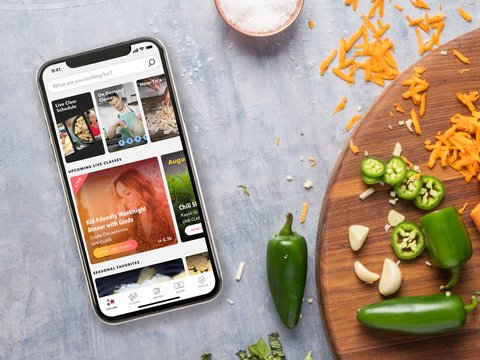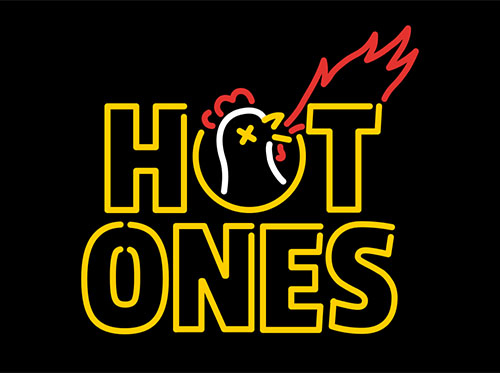Bitcoin Pizza and Food Commerce Momentum
Today marks our fifth episode of the RockWater Roundup.
What’s In This Episode
Anthony Pompliano, an investor and podcaster, launched Bitcoin Pizza, a new “decentralized” pizza brand. It’s yet another example of a creator or media brand launching a direct-to-consumer food & beverage brand. In this episode we explain why food media overindexes on commerce success, how these capital-lite business initiatives are being powered by ghost kitchens and delivery apps, and what we’ve learned talking about food initiatives with traditional and digital publishers.
Subscribe to our newsletter. We explore the intersection of media, technology, and commerce: sign-up link
Learn more about our market research and executive advisory: RockWater website
Email us: rounduppod@wearerockwater.com
You can listen, subscribe, and follow our show on:
Our ask: wherever you listen, and particularly on Apple Podcasts, please give us a rating and write a short review. And forward this email to a friend. Doing so will help others discover the RockWater Roundup.
Episode Transcript
The conversation was lightly edited for clarity.
Chris Erwin:
So Andrew, one of the things that we have not yet covered on this microcast, but that we do a lot of writing and work on at RockWater, is the explosion of the food, media and commerce space.
Andrew Cohen:
Yes. Very excited to dive into this one.
Chris Erwin:
And there was a recent deal that was announced that I think is a great jumping off point. So over the past couple of weeks, Anthony Pompliano, an investor and podcaster, and who has a large online following, he launched Bitcoin Pizza, which has been described as a new decentralized direct to consumer pizza brand. So he launched it in 10 cities and the launch was enabled by Popchew, which is a company that helps launch food brands for different partners. And of note, we know the Popchew team, we think very highly of them. And we think this is a really cool market data point for some of their upcoming growth. But I think Andrew, what this sparks, is that this is one of many similar food meeting commerce deals that we’ve seen over the past, call it year and a half, right?
Andrew Cohen:
Yeah. We are always advocating for our media clients that they diversify revenues by expanding into D2C commerce. And as we’re tracking the market, we kept noticing that some of the biggest commerce successes we were seeing were happening in the F&B space when it came to media brand launches. And if you just look this week, the TikTok influencers of the Sway House just launched their own limited edition cereal with Magic Spoon. Dwayne, The Rock Johnson’s personal tequila brand is on track to sell 300,000 cases in its first year. MeatEater launched a branded whiskey that sold out in its first week. And we’re also seeing this, not just with CPG products, but also with what we’re calling F&B branded experiences. So everyone knows about the MrBeast ghost kitchen activation, which launched 300 locations across the country and had a projected revenue potential of 300 million.
Chris Erwin:
Hold on, wait, did you say 300 million?
Andrew Cohen:
I said 300 million. Yeah, it’s crazy.
Chris Erwin:
Okay. Wow.
Andrew Cohen:
Also, other virtual restaurant chain activations food, Barstool Sports, launching a one bite pizza delivery app, which processed over a hundred thousand transactions in its first month, the LA Dodgers partnered with Postmates and a specialized ghost kitchen startup called the Home Team kitchen to deliver their stadium food to fans across LA during their games and demand for this service doubled their initial projections. And even in brick and mortar, we’ve seen the success of branded F&B experiences, albeit pre-COVID, but Time Out was incredibly successful with Time Out Food Markets, which in 2019 generated 17 million in net revenue and processed a total transaction volume of 56 million. So Bitcoin Pizza comes as no surprise on the tail of all these other success stories that we’ve seen. We’ve been tracking a part of them, definitely plan on putting together a more robust watch list. So, stay tuned for that in the coming weeks.
Chris Erwin:
All right, Andrew. So that’s a lot to bite off there and I know there’s a lot more on the list, but yeah, let’s talk about like why food and beverage over index’s on commerce for these digital media brands and creators? So look, I think back to when I first joined the digital video revolution and I was early at some of these YouTube, MCNs like Big Frame and Awesomeness, we were all aligning around different verticals, whether it was creating content around beauty or teens or gaming. And then we saw companies like Tastemade, which had built content verticals around food and just seeing how quickly that they grew their audience and viewership was incredible. And then noticing that a lot of the different verticalized content brands that started creating lifestyle and food and beverage adjacent content, that the viewership around those sub-brands was growing like crazy.
Chris Erwin:
And so I think we’ve seen the same, if you look at new platforms like Instagram and TikTok and others, content around food and beverage, just increasingly dominates the charts. And so some of the driving factors that I think that we’ve observed is that, one, food is universal. Everyone eats, it’s a cultural unifier. It brings people together. And there’s much that happens around the food and beverage experience, right? Brings people together. There’s lots of different products. There’s the cookware, there’s the eating ware, there’s different ingredients. There’s the preparation, there’s the going out to restaurants, there’s the experience at home. So, there’s a lot. We started seeing this and then I think there was a couple of questions that we started raising both to ourselves and that we were bringing to clients. And I know you have a point of view here Andrew?
Andrew Cohen:
It’s definitely become more of a lifestyle accessory. It used to be the only people with Food and Bev commerce empires were professional chefs like Emeril Lagasse. Now you have someone like Dave Portnoy can be the biggest influencer in the pizza space, even though I doubt he’s ever cooked a pizza before, but it’s really more about influence now. But what we’re seeing is, a lot of the media companies and creators who are holding this influence and who are driving discovery and sales of these products are leaving a ton of money on the table. All of these activations that we’re seeing for the most part are licensing deals where the IP owner, the brand owner, the creative talent themselves are getting only about 3 to 7% of the total revenues from these products that are so successful, because of their promotion, their likeness, their personality.
Andrew Cohen:
And so we started wondering why? We started to think licensing and partnerships is a great way to kind of dip your toe in the water before diving in head first, just to kind of test the potency of your brand and move product at a specific space. But once we’ve seen success stories, we were expecting to see a lot more O&O owned and operated launches in this space, where the brands and creators will be able to retain a lot more of that upside, but we just weren’t seeing it.
Chris Erwin:
I think that’s right Andrew, the two things that we saw just to properly recap is, we were asking ourselves, why are not more media brands, our clients, and other prospects out there, why are they not launching more food and beverage businesses? And then two, like you said, why are they not going from the licensing model, taking a minority share of revenues to thinking about doing JVs with operating partners, or going owned and operated, right? More capital up front for more higher upside. So we had a partner that we started working with, which is one of the world’s foremost food and beverage innovators and formulators.
Chris Erwin:
And so we started going out to our media clients and saying, “Okay, like, Hey, we have a partner, let’s bring some ideas to market. This is what we’re thinking.” But we started hearing some really serious hesitations. They’re like, “Okay, Chris and team, we’re excited about this idea. We want to diversify revenues. We see where the market’s headed, but here’s the challenge. It’s like, we’re not in the manufacturing business. We don’t know how to create a different formula and then how to find an operating partner at scale. But then we’re concerned about inventory management. We’re concerned about scale distribution. We also believe that to really drive the proper brand awareness for this launch and to make it work that we need brick and mortar placement, we need shelf placement. And we need to think about how do you do in-store marketing?”
Chris Erwin:
And so, as we started to hear these concerns and increasingly that, this is a very different muscle that their team would have to flex versus what they’ve typically done, which is create content and then build audiences around that content. So there was concern about how much capital that have to be put up front and then how to hire and scale an organization, recruit the right executives, right? A lot of new learnings to beat that were here.
Chris Erwin:
This was very good feedback. And as we started thinking about solutions, we then started reading about the emergence of ghost kitchens in the market, which felt almost like the perfect hybrid, where you have ghost kitchens and delivery, where you’re piggybacking off the delivery apps, where it’s like, “Okay, you’re starting to solve all these problems. They’re capital light and efficient, but you still have more upside from a revenue and profit point of view. It’s like, all right, it’s just like the perfect middle porridge.”
Chris Erwin:
To break that down with ghost kitchens, you already have remnant kitchen inventory, or these kitchens that can do all of the food manufacturing. If you’re starting with a small alpha launch, maybe you’re using only five locations. And then as you go to nationwide or international, you’re working with hundreds or thousands of different partners, right? So easy to scale, low capital. You’re not on the hook for managing inventory. And then for the distribution point, you’re piggybacking off of Uber Eats, DoorDash, Grubhub, or Postmates, that’s already doing the last mile delivery. You don’t have to figure that out yourself or build out that infrastructure, which is really expensive. This got us excited, right?
Andrew Cohen:
Oh, for sure. I mean, it makes perfect sense. And there’s so many ways you can do it. You can look at it as a revenue play. I mean, just look at Mr Beast, $300 million revenue potential. I would certainly say that’s a revenue play, you could also look at it as marketing, I’m sure for the Dodgers example, that it’s not exactly moving the bottom line for the Dodger’s organization, but it’s a great way to kind of eventize the at-home experience during the broadcast to get people get around the couch, order a Dodger dog, lean in to that broadcast experience. So it can really function as marketing as well. I’m excited to see how other brands and creators can activate ghost kitchens, kind of both ways.
Chris Erwin:
I really like the point about you can eventize around the experience and you can thoughtfully extend your brand, all the different places where your consumers or your fans are. Right, that’s really key. So look, we think that there’s a duality approach here where you can drive meaningful top line revenue and bottom line profit, but just the improved marketing, which then bolsters your overall media business is really powerful. Now, look, there are challenges. This is not perfect. And a lot of people have to figure out things like, how do you kind of grow your menu over time? How do you maintain quality control? Where if you have a lot of different ghost kitchens and different partners that are creating the same product, how can you have product consistency throughout? But in terms of just getting something off the ground launch and running and learning from it, great way to go.
Chris Erwin:
A big question that we think about, and we’ll close this out. We’ve seen the emergence of companies like Teespring and others, where if you want to launch a T-shirt line or a mug or any different types of branded product, where you can take your brand logo and likeness and slap it onto a physical, tangible good, there’s a lot of solutions that are out there. But who’s going to launch the new turnkey solution to do this for food. It seems that Popchew who we talked about enabling the Pompliano business is definitely one of them. And I think that we’re going to see more going forward. We see it as a huge opportunity, but any other big questions that you think of Andrew?
Andrew Cohen:
No, I think that’s a good one. I’m going to respect the 30 minutes or less promise and say until next time.
Chris Erwin:
All right. Later Andrew.
Andrew Cohen:
Later.
—
Ping us here at anytime. We love to hear from our readers.



